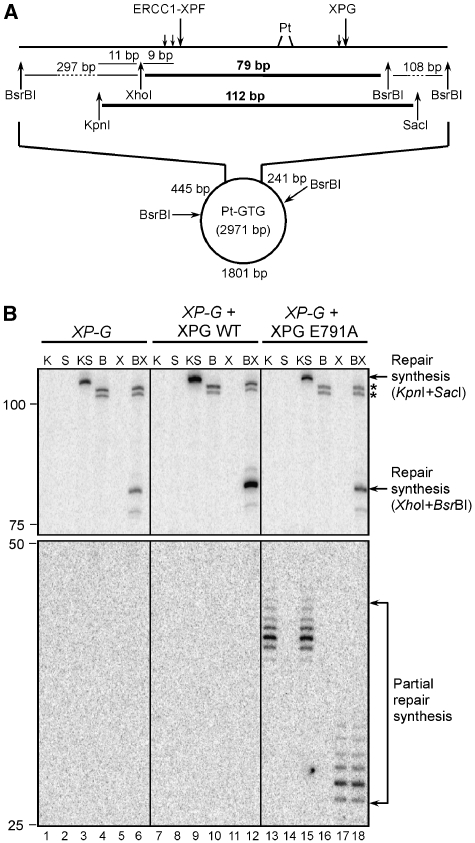Figure 3.
XPG E791A supports partial DNA repair synthesis in vitro. (A) Schematic representation of the lesion-containing plasmid used in the assay. Incision sites by ERCC1-XPF and XPG and the sizes of restriction fragments are indicated. The fragments containing the repair synthesis products are shown in bold (79 and 112 bp). (B) cccDNA with a single defined cisplatin lesion was incubated with a XP-G cell extract, either alone (lanes 1–6) or in the presence of 600 fmol of wild-type XPG (lanes 7–12) or XPG E791A (lanes 13–18) as well as 10 μCi of [α-32P]dCTP and 10 μCi [α-32P]TTP. DNA was further purified, digested with KpnI (lanes 1, 7, 13), SacI (lanes 2, 8, 14), KpnI+SacI (lanes 3, 9, 15), BsrBI (lanes 4, 10, 16), XhoI (lanes 5, 11, 17), BsrBI+XhoI (lanes 6, 12, 18) and analysed on a denaturing PAGE gel. The positions of size markers are indicated on the left, the nature of the observed products on the right of the gel. Two unspecific bands are marked with an asterisk. Abbreviations: K, KpnI; S, SacI; KS, KpnI+SacI; B, BsrBIl X, XhoI; BX, BsrBI+XhoI.

